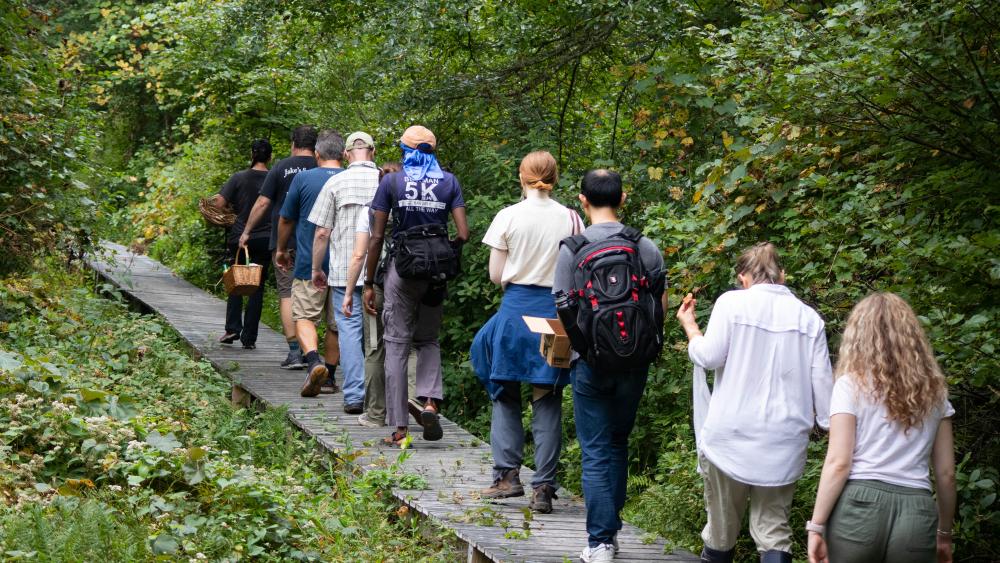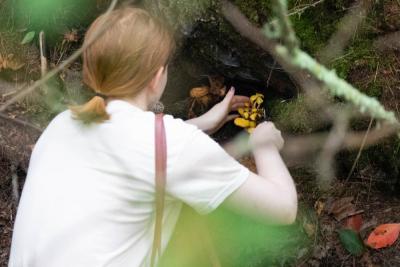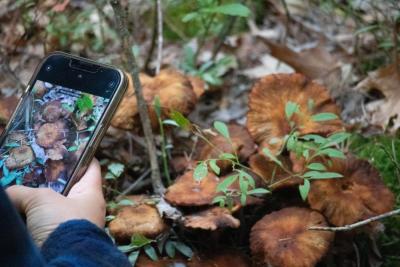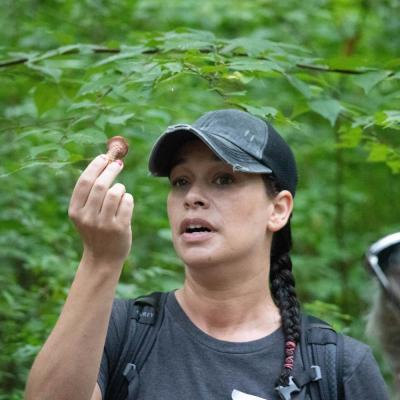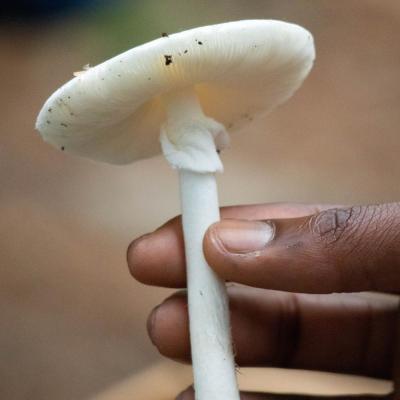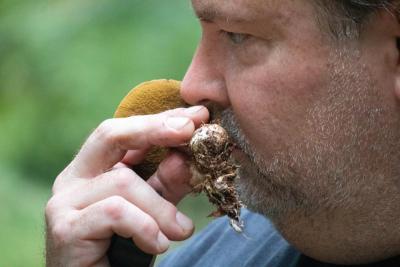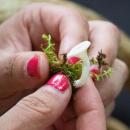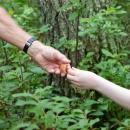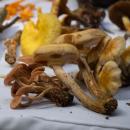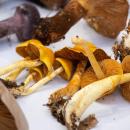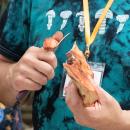A moist walk in search of Marion mushrooms
MARION — It was a “nice, moist day” on Sunday, Sept. 10, said Sippican Lands Trust Director Alan Harris, with “lots of mushrooms all along the trail” at the trust’s White Eagle Parcel in Marion.
The Sippican Lands Trust was joined by the Boston Mycological Club — the world’s oldest continuously existing amateur mycological club — and dozens of guests for a “mushroom foray” to harvest and identify fungi.
“We’re in a rainforest,” said Boston Mycological Club president David Babik, who explained that the wet summer has led to a good season for mushrooms.
The majority of participants on Sunday’s mushroom walk were first-time mushroom hunters — and Babik had a piece of advice.
“When you're first starting out mushroom hunting, it's really important to learn the ones that are super easy to identify and learn the ones that are super toxic,” he said. “You learn those two, and then you can spend the rest of your lifetime learning everything in between.”
Along the trails at the White Eagle Parcel were everything from edible Chicken of the Woods and Beefsteak mushrooms to Amanita verna — also known as a “destroying angel,” said mushroom expert Melissa Dubois, who led a group through the woods.
Dubois is an expert on all varieties of Amanita mushrooms from the tasty to the deadly.
“The genus Amanita contains some of the most deadly species in the world. It also contains edible species [and] contains toxic species. Really, every variety,” said Dubois. “The recommendation I'm gonna say right off the bat is if you are not very skilled in identifying … the whole genus of Amrita I would not even dabble in considering trying to eat them.”
Along the walk, Dubois and fellow mushroom hunter Nick Pirraglia used all five senses and a magnifying loop to identify mushrooms. Anything from the color of the bruising on a cut mushroom, to its smell, to the way the mushroom’s gills connect to the stem can signify a different species, explained Dubois.
Pirraglia, who is color blind, relies on the smell, shape and even taste of mushrooms to help him identify different species.
“Color matters so much in identifying mushrooms,” he said. “So I have to use other types of things to figure out what a mushroom is like the way the gills look, the shape … everything other than color. And then of course, I have to ask my color-sighted friends for help.”
Pirraglia, who carries a custom foraging basket sporting wooden mushroom decals made by his daughter, first became interested in mycology while working as a professional chef in Manhattan.
“I worked at a French restaurant [and] we used a lot of wild mushrooms,” he explained. “And [I thought], ‘are these really wild?’ They're really not, they're cultivated. In the late 80s I found my first giant puffball and that started my interest in mushrooms.”
First-time mushroom hunters and Rochester residents Sheryl and Brian Porter discovered their own interest in mushrooms because of fungi growing in their own yard.
“It’s fascinating,” said Sheryl. “My husband went into the woods and found a trumpet mushroom — which everyone was so excited about because it’s a delicacy.”
At the end of the walk, each mushroom hunting group reconvened to pool their harvest and identify what they could. But even with some of the state’s top mycological minds in attendance, some mushrooms went unidentified.
“If you’re ever on a mushroom walk and the person leading the walk identifies every mushroom in front of them, they're making it up as they go along,” said Babik. “It's almost impossible, for some things you need a microscope, some things you can tell what genus they are, but not the exact species.”



